Does Pink Himalayan Salt Have Iodine & Is it Enough?
In a hurry? Click here to read the Article Summary...
Are you curious about the hype around pink Himalayan salt in healthy recipes?
If so, you’re not alone. This salt boasts dozens of minerals, including sodium, but how does it compare to other types of salt?
In this post, we’ll explore the benefits of pink Himalayan salt, as well as its iodine content to help you decide if it’s the right choice for your health and vitality.
Why Does the Body Need Salt?
What’s the Difference Between Sea Salt and Table Salt?
Does Himalayan Salt Have More Iodine Than Sea Salt?
What Is Himalayan Salt and Where Does it Come From?
The Benefits of Trace Minerals in Pink Himalayan Salt
Why Your Body Needs Iodine
Does Pink Himalayan Salt Have Enough Iodine to Correct Iodine Deficiency?
Don’t Rely on Salt to Meet Your Iodine Needs
Why Does the Body Need Salt?
Salt has been used by humans around the world since Neolithic (Stone Age) times. It has been used to flavor food, for meat preservation, for pickling, and as a healing substance. In Europe, the use of salt rooms (halotherapy) for healing and detoxifying goes back decades.
At the top of the list for both healing and taste is Himalayan salt. This rosy-pink crystalline salt has been used in the Ayurvedic tradition for thousands of years. Because of its pinkish color, you may see Himalayan salt referred to as “pink Himalayan salt” or “Himalayan pink salt.” It’s all the same substance.
The difference between quality and types of salt is something you should take into consideration if you’re wanting to lead a healthy, vibrant life.
The bottom line is that the human body needs salt. Specifically, it needs sodium chloride (NaCl), which is the chemical name for salt. Sodium in the body is an electrolyte and is absolutely essential for many bodily mechanisms and functions. This includes:
- nerve and muscle function
- maintaining fluid levels
- regulation of temperature
- blood pressure regulation
- and much more
What’s the Difference Between Sea Salt and Table Salt?
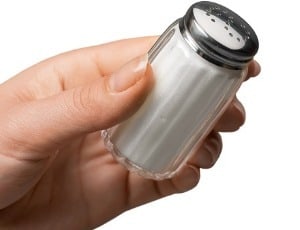
First of all, you should know that refined table salt (i.e., the tiny granules that come in those blue & white boxes at your local grocery store) hardly resembles what sodium chloride is in its natural form.
Today’s table salt is mined from underground stores. Once it gets brought up to the surface, it goes through a whole series of chemical processes before it winds up in a shaker on your table.
These processes include bleaching and baking (up to 1200 degrees) as well as the addition of many kinds of chemicals, including:
- anti-caking agents
- absorbents
- preservatives
All of this is designed to give table salt its customary fluffy, free-flowing texture and super white color. Needless to say, by the time it gets to your spice rack, there isn’t much nutrition left in it.
Why You Shouldn’t Count on Table Salt for Your Iodine Needs
The iodine that’s added to common table salt is rendered useless for the most part by iodine-blocking agents used during the bleaching process. Other chemicals within it can present health dangers for the entire body, especially for the lymphatics, other detox pathways, and the thyroid.
A Note About Kosher Salt

Kosher salt is table salt in a different form. Instead of fine granules, it is flakes of salt or even small pebbles of salt that are much larger and easier to pick up.
These larger crystals are better for drawing out moisture from meat, making them perfect for use in the koshering process (hence the name). The large size of the salt granules makes kosher salt popular with chefs and home cooks for seasoning.
Kosher salt usually doesn’t contain any added iodine or anti-caking ingredients.
Sea Salt Is Far Less Processed Than Table Salt
Sea salt, unlike common refined table salt, does not contain added iodine. The amount of processing sea salt goes through depends on the manufacturer.
For most sea salt on the market, the amount of processing is minimal and very few additives are used before it winds up on the shelf. Sea salt, which comes from evaporated ocean or saltwater lake water, contains a lot more natural minerals than table salt [1].
There are many different specialty types of sea salt available from bodies of water around the globe. One popular example is Celtic salt which is harvested in the Brittany region of France using a 2000-year-old method. Celtic salt is grayish in color and highly prized by chefs for its flavor.
Does Himalayan Salt Have More Iodine Than Sea Salt?
If your biggest concern is which salt has the most iodine than either sea salt or Himalayan salt is a good choice as the amount of iodine is about the same (more on that below). But when it comes to a diversity of minerals overall, pink Himalayan salt came out on top in at least one notable study.
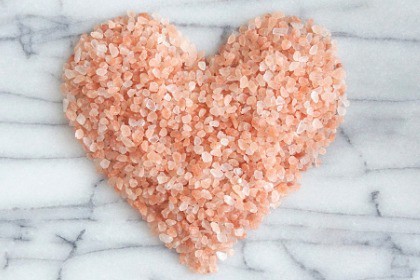
A double-blind placebo clinical study conducted by Fenestra Labs tested participants’ reactions to taking sea salt versus Himalayan sea salt. Researchers found Himalayan salt to be more effective at “normalizing mineralization” in the body. It also outperformed sea salt in being able to balance pH and lower oxidative stress in the body [2].
Let’s dive a little deeper into just what substances are found in those beautiful pink crystal salt rocks and how much they can benefit you and your health.
What Is Himalayan Salt & Where Does it Come From?
All Himalayan salt comes from the Jhelum District in the Punjab region of Pakistan. The ancient history of how this rosy-pink mineral came to be is fascinating. Like many areas of the world that are now dry land, the Himalayas currently stand where an ancient ocean used to be. When that body of water dried up about 300 million years ago, what was left was a vast salt deposit.
The largest mine in the area is the Khewra Salt Mine. Khewra sits at the foot of the Himalayas, a little over a hundred miles from the city of Islamabad. Unlike other parts of the world that used to be covered in ocean, the region of the Himalayas where the Khewra Salt Mine is located is protected from smog and other chemical pollutants by the Himalaya mountain range.
Himalayan pink salt is actually sea salt that is mined like rock salt. Experts estimate that it contains anywhere from 80 to 84 different kinds of major and trace minerals besides sodium. This is the main reason why all the yummy, good-for-you recipes on our blog call for pink Himalayan salt (or sea salt) in the ingredients – never iodized table salt.
Why Is Himalayan Salt Pink in Color?
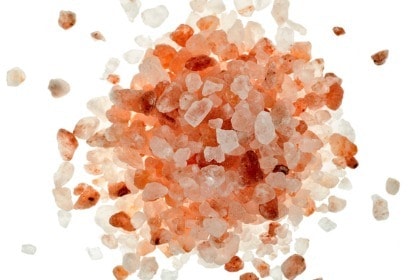
When shopping for Himalayan pink salt, you may notice that the salt crystals can range from the very faintest pink (almost clear) to a dark orangey-red in color.
The color comes from iron oxide (i.e., rust) found naturally in the salt deposits. While some people believe that the darker color must mean it’s healthier, it simply means it has more iron in it, which can actually give it a more bitter flavor for consumption.
There are countless different grades of quality and brands of Himalayan salt available for purchase. Many big chain stores like Sam’s, Costco, and Trader Joe’s all carry their own store brands of Himalayan salt. The average consumer likely won’t notice a big difference in taste between brands from just a sprinkle on their food, so go with what best suits your budget and culinary endeavors.
The Benefits of Trace Minerals in Pink Himalayan Salt
Trace minerals are minerals that are absolutely needed for the body, but just in smaller quantities than regular minerals. Some examples of trace minerals you may recognize include iodine, iron, copper, selenium, and zinc.
A little really does go a long way when it comes to trace minerals. Even though the body usually needs less than 100 milligrams of any one of them per day, significant consequences can result when we don’t get what we need. Just a few of the possible negative effects include [3]:
- mood issues
- reproductive issues
- weight gain
- cardiovascular complications
- digestive issues

Trace minerals are extremely important for dozens of functions in the body, including building enzymes, cleansing, and strengthening the blood and circulatory system, balancing hormones, reproductive health, and hundreds of other biochemical reactions that benefit the body and the brain.
The dozens of different kinds of trace minerals in Himalayan salt are the reason why including it in your diet can help your health on multiple levels – especially when used in place of table salt.
Studies over the years have indicated that ingesting Himalayan salt can [4]:
- help your detoxification system
- help you clear out the respiratory system
- lower inflammation
- strengthen the immune system
- boost longevity overall
Does Pink Himalayan Salt Have Iodine?
One of the key minerals found in Himalayan salt is iodine. That is great news since this is an essential mineral that we must get from food or supplementation. But does pink Himalayan salt have iodine in sufficient quantities that your thyroid and other organs that rely on iodine really need?
Why Your Body Needs Iodine
Just as your body needs sodium for a myriad of important functions, it also needs iodine. Iodine is the main source of “food” for the thyroid. Other areas need iodine for nourishment as well, such as the breasts and uterus area in women. Many women with breast cancer suffer from low iodine levels and thyroid dysfunction [5].

The thyroid is the “master hormone processor” in the body. It sends signals that basically tell all other hormones where to go and what to do. Balanced hormones are important for more than just reproductive health, and just the right amount of iodine is absolutely needed for your hormones to do their job effectively.
According to the National Thyroid Association, a significant 12% of the U.S. population are set to suffer from some kind of thyroid condition sometime in their lifetime [6]. For thousands of individuals, this will come in the form of hypothyroidism due to insufficient amounts of iodine. World Health Organization (WHO) statistics estimate that roughly 2 billion people worldwide are feeling the effects of iodine deficiency right now [7].
What’s more, your body does not need to be completely depleted to feel the consequences of a lack of iodine. Millions of people around the world (including in the U.S. and other western countries) actually suffer from subclinical iodine deficiency that can lead to hypothyroidism (defined by research as urinary iodine concentrations of less than 150 μg/L) [8].
Some of the signs of subclinical iodine deficiency may include:
- low energy/fatigue
- weight gain
- “brain fog”
- cold sensitivity
- gut issues
- chronic sore throat
- hair loss
- dry skin
- uterine fibroids/ reproductive issues in women
- prostate issues in men
- autoimmune conditions
If you have any of these issues on a regular basis, iodine deficiency may be to blame. Be sure to consult with a qualified health professional to discuss your options for healing!
Does Pink Himalayan Salt Have Enough Iodine to Correct Iodine Deficiency?
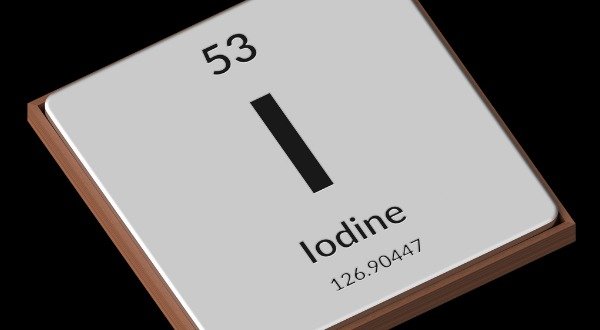
The obvious correction for iodine deficiency is to increase iodine levels in the body slowly and gently through iodine supplementation, while at the same time getting rid of halide toxins that block iodine absorption.
If you have already made the switch from iodized table salt to Himalayan or sea salt, that is definitely a step in the right direction! Remember that table salt is processed using bleaching agents which block iodine in the body. It may sound contradictory to think that a product which has iodine added to it actually strips iodine from the body. Crazy as this sounds, that’s exactly the case with iodized table salt.
It’s true that both sea salt and Himalayan salt naturally contain iodine, but is it enough to replace the depleted stores in your body that are caused by halide toxicity, poor eating habits, stress, and a myriad of other factors?
The answer, in a nutshell, is no.
The reason is that both Himalayan and sea salt contain only trace amounts of iodine, which is not enough to adequately supply all that your body needs. This is especially true when it comes to Himalayan and sea salt, which has a more refined flavor.
A little goes a long way when it comes to Himalayan salt and most sea salts, so most people tend to use less to get the same amount of flavor. This is great news for sodium levels since too much sodium can cause just as many problems in the body as not enough sodium can. It’s also great news for your budget!
Don’t Rely On Any Type of Salt to Meet Your Iodine Needs

Himalayan (and other sea salts) are an amazing addition to any spice cabinet, and we highly suggest replacing the table salt that may be in your salt and pepper duo with nutrient-rich pink Himalayan salt if you haven’t don’t so already. The synergy of all those trace minerals within it just can’t be beaten.
At the same time, you’ll also need to include other foods rich in iodine in your diet.
We also suggest that supplementing with a quality iodine product just makes sense in our toxic world. But unfortunately, not all types of iodine supplements are alike and some even contain harmful ingredients. Many others are just a waste of money since you would have to consume the whole bottle to get enough absorbable minerals to do your body any good.
Choose Organixx Nascent Iodine for Safe and Gentle Absorbability
When it comes to making your iodine supplement work for you, absorbability is the key. It is also the hiccup point for this essential mineral. This is because most forms of supplemental iodine do not absorb well in the body.
Many experts agree that the best form of iodine in terms of both gentleness and absorbability is nascent iodine. This form of iodine is also called atomic iodine, monatomic iodine, atomidine, or colloidal iodine.
Nascent iodine is superior because of how it is structured at the molecular level. It contains an incomplete number of electrons, which gives it an electrical charge. This allows it to not be absorbed in the digestive tract like most supplements, but to go directly to the specific organs that are most hungry for it [9].
Organixx Organic Nascent Iodine provides you with one of the most important minerals for your entire body in a way that you cannot get from even the most complete foods – including pink Himalayan and sea salt.
When your organs are working hard to detoxify, you want the purest form of iodine possible to help them work more efficiently. It only makes sense to use an organic form that’s totally natural and free of chemicals. Organixx Iodine is one of the only formulas that is USDA Certified Organic. It’s a pure, nascent form of iodine which your thyroid can use immediately.
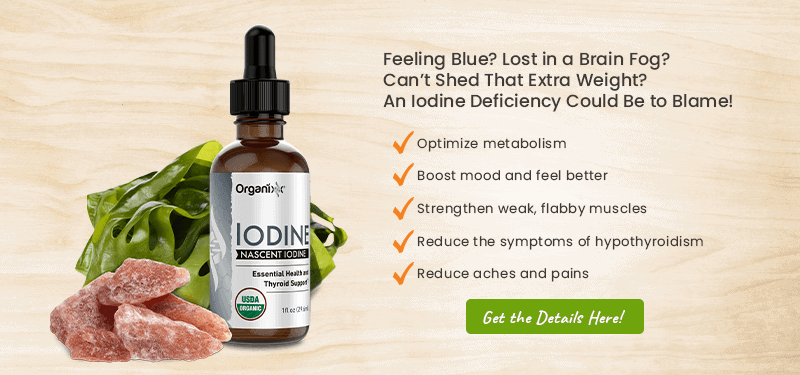
 Sources:
Sources:
Article Summary
Your body needs sodium, an electrolyte that is absolutely essential for many bodily mechanisms and functions. Common table salt is mined from underground stores and goes through a series of chemical processes including bleaching, baking, and the addition of various anti-caking agents, absorbents, and preservatives.
The iodine that’s added to common table salt is rendered useless for the most part by iodine-blocking agents used during the bleaching process. Kosher salt is a larger form of table salt but usually doesn’t contain any added iodine or anti-caking ingredients.
Sea salt comes from evaporated ocean or saltwater lake water. It usually contains a lot more natural minerals than table salt.
Sea salt and Himalayan salt both contain around the same amount of naturally occurring iodine. According to at least one study, pink Himalayan salt has a greater diversity of minerals than sea salt – 80 to 84 different kinds of major and trace minerals besides sodium.
Himalayan salt (aka pink Himalayan salt or Himalayan sea salt) comes from an ancient ocean that dried up 300 million years ago, leaving a vast salt deposit at the base of the Himalayan mountain range. It is mined like rock salt but is actually sea salt.
One of the key minerals found in Himalayan salt is iodine, the main source of “food” for the thyroid. While both sea salt and Himalayan salt contain iodine, it is NOT enough to replace the depleted stores in your body.
Organixx Organic Nascent Iodine provides you with one of the most important minerals for your entire body in a way that you cannot get from even the most complete foods – including pink Himalayan and sea salt.


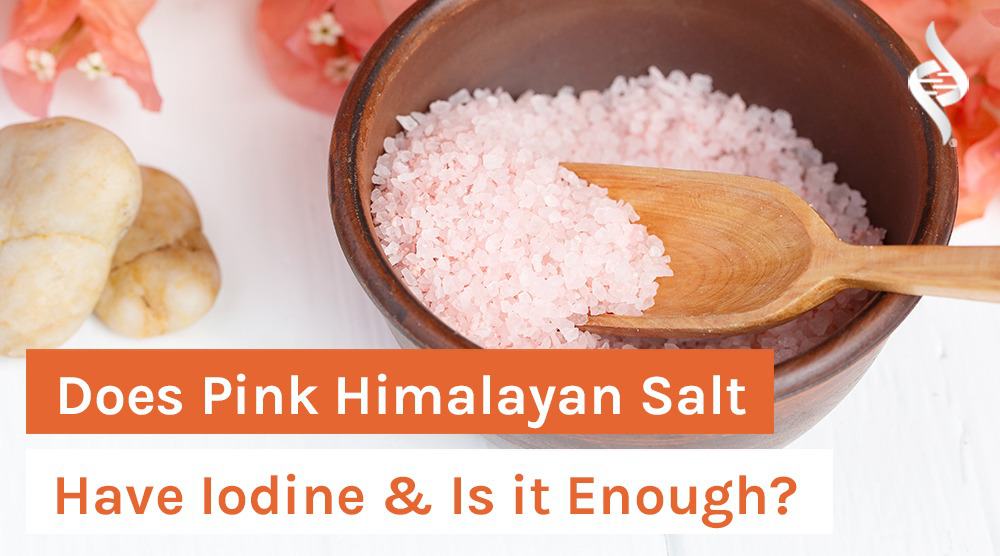


Very informative!
Very interesting. What do you know about Coptic salt? It apparently comes from the Himalayan area as well and appears similar to the pink salt. However, it contains different properties and at times it's mistaken for the Himilayan salt. Apparently, the Coptic salt is good for diabetics. Would you happen to have more information on Coptic salt?
Hi Megumi Kumagawa, thanks for your comment. We're happy to hear that you found the article informative.
Unfortunately, we do not have any further information on Coptic salt other than that it is a healthy salt variety that is safe for many patients suffering from many diseases and is used to refer to Himalayan Pink salts.
With that being said, Organixx Organic Nascent Iodine provides you with one of the most important minerals for your entire body in a way that you cannot get from even the most complete foods – including pink Himalayan and sea salt.
For more details, we encourage you to check out the following link: https://shop.organixx.com/collections/all-products/products/iodine
We hope you find this helpful and wish you a happy & healthy day!
Very interesting. What about Celtic and Redmond’s Real? How do they compare with the pink salt? Thanks for the informative articles.
Ms. G.
Hi G. Deskin, thanks for your question. Glad to hear you found this article informative.
Regarding your question, unfortunately, we do not have any further information on Redmond's Real, Celtic, and Himalayan salt than they are all unrefined sea salt with very similar mineral content with different geological locations.
With that being said, we'd love to share that Organixx Organic Nascent Iodine provides you with one of the most important minerals for your entire body in a way that you cannot get from even the most complete foods – including pink Himalayan and sea salt.
If you would like to learn more, we invite you to check out the following link: https://shop.organixx.com/collections/all-products/products/iodine
Thank you so much for being here with us. Hope you have yourself a wonderful day!
Very comprehensive explanation, thank you!